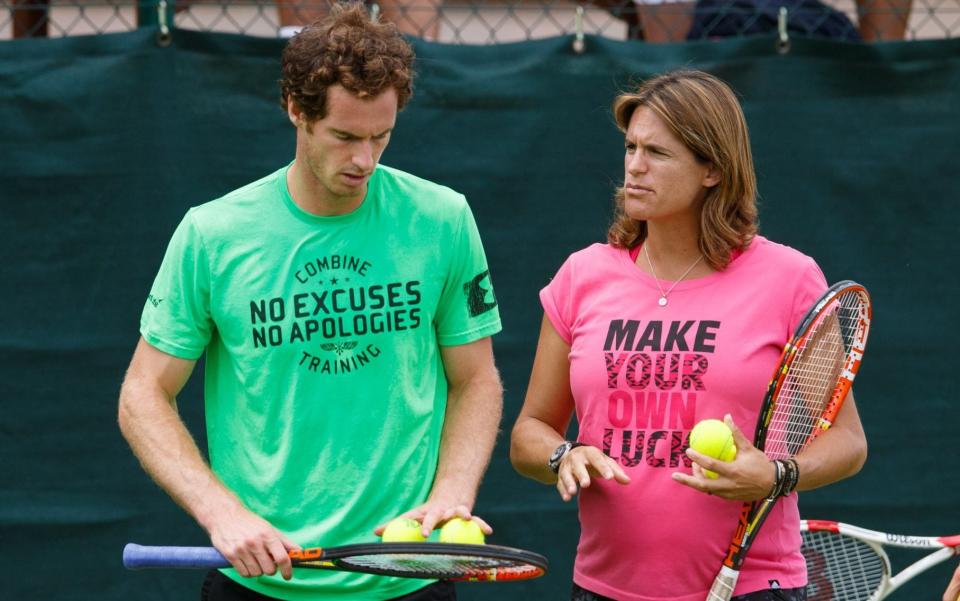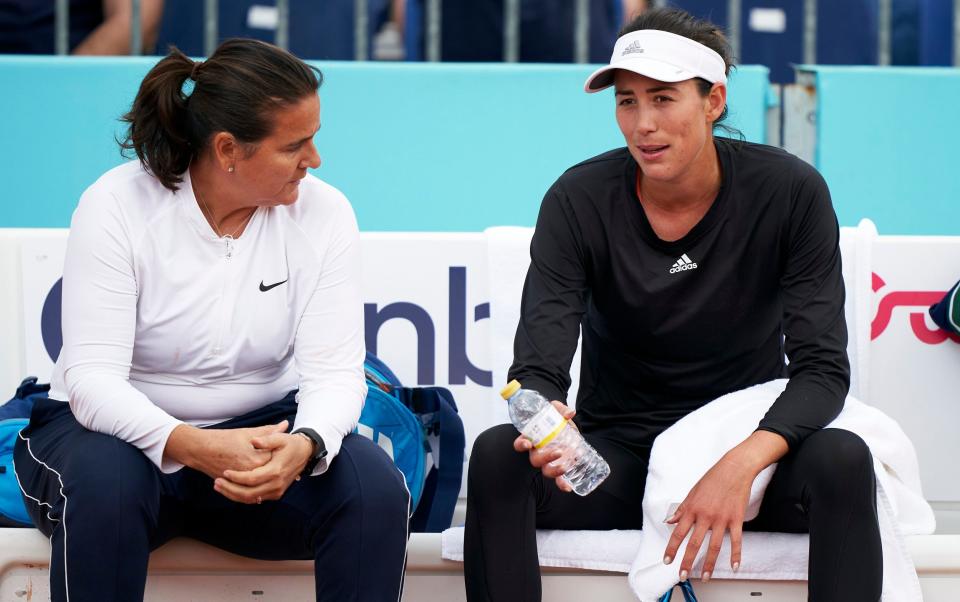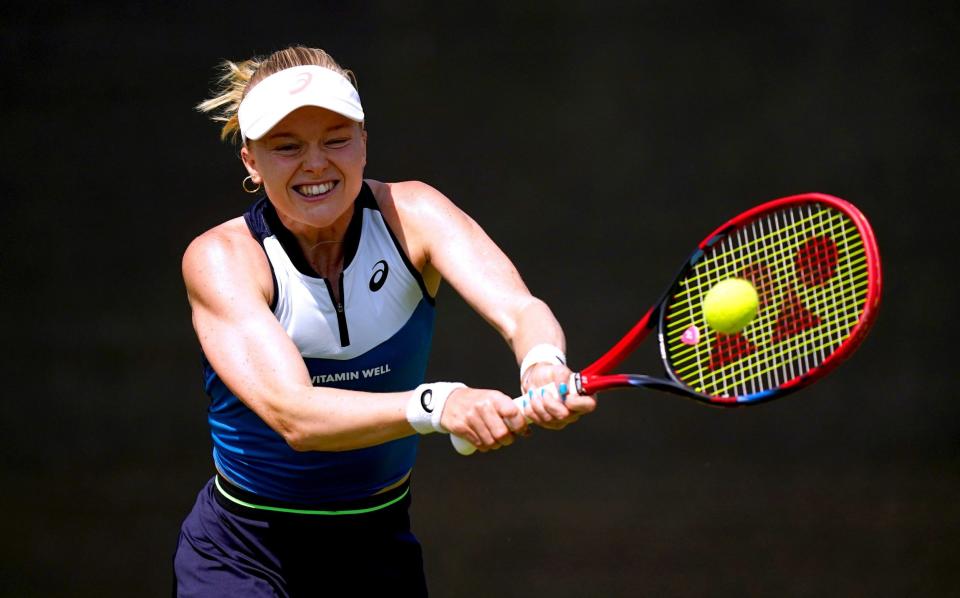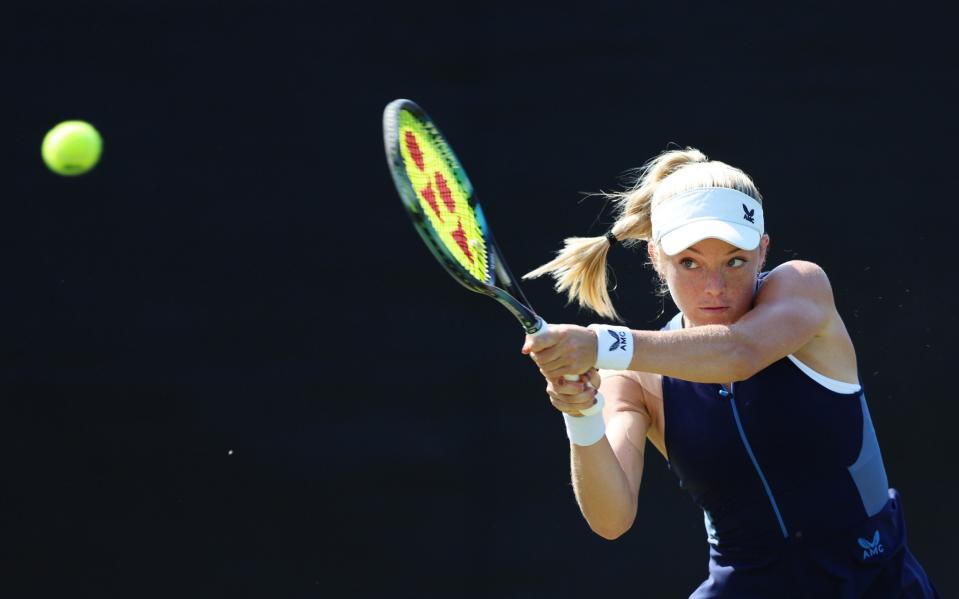Why are there so few female coaches in tennis?

“I guess people are still not ready.” That is Amelie Mauresmo’s verdict on female coaches in tennis. When Andy Murray, then world No 1, appointed Mauresmo as his coach it was hailed as a watershed moment for women in coaching but – nine years on – she says flatly: “It didn’t really help, actually.”
Watch any tennis match, on either the men’s or women’s tour, and the cameras inevitably pan to the player’s team in the stands. Next time they do, start counting how many women you can see. Those brief glimpses of coaches, physiotherapists and fitness trainers paint a sorry picture of the state of gender equality in tennis.
There are only eight women listed as full-time coaches for the WTA’s top 200 players, accounting for just four per cent. Of those eight, three are mothers to the player they coach and five are former WTA players. On the ATP website there are 231 active coach members listed: just one – Anastasia Kukushkina, who previously coached her husband Mikhail – is female.
For a sport that pertains to be a leader when it comes to gender equity, it is striking that women all but disappear when it comes to coaching at the top level.

“A few years ago, that’s when I thought we were really on to something,” former British player and now coach Yasmin Clarke says. “In 2017, there was Garbine Muguruza with Conchita Martinez, Jelena Ostapenko with Anabel Medina Garrigues. Both won slams. I was thinking, wow, we’re getting there. But I heard recently a female player saying she was criticised for having a female coach. I think it’s embedded in the game, it’s about changing attitudes.”
But why is this? This season, British No 5 Harriet Dart shared a summary of her new coach. “He’s young, he can hit well, he can travel a lot, it’s going alright so far,” she said. It was a short but revealing list of priorities that many players share when it comes to picking a coach, and they can act as key barriers blocking women from jobs on tour.
Dart, like others, will be keen to keep costs low, so a coach that doubles up as a hitting partner is a two-for-one deal. That is attractive to a lot of women on tour, especially as they are said to be less inclined to practise with other players than the men are.

Clarke, who coached her brother Jay throughout his teens, says this means women are automatically at a disadvantage when it comes to jobs on the women’s tour, as they are unlikely to be able to offer the same power on the other side of the net.
“A lot more of the male players are friends, if I’m honest, they have that good camaraderie and are quite happy to leave practice at the door – I wish that we had that more on the women’s side,” she says. “If we look at Jack Draper working with James Trotman, Liam Broady with Dave Sammel – all very good coaches but wouldn’t for a second think they could hit with them at that level. Whereas I do think the women generally tend to have a hitter/coach.”
Murray remains an outlier in top male players, for hiring two-time major champion Mauresmo at the height of his career. At the time, Pat Cash wondered how male players might react to a female coach wandering into the changing rooms, overlooking the overwhelmingly male coaching workforce on the WTA tour.
Murray has since said the scrutiny placed on Mauresmo’s work was unlike any he has seen. Mauresmo remembers the time as “pretty brutal to start with”. “I had to prove, I think twice, that I was able to work with a man at this level,” she says. “But I think we both had a quiet agreement that we were going to make it work: he did his part, I did my part, and we did pretty well.”
That ingrained bias came not only from outside commentators, but from his own team and the locker room itself. Prof Leanne Norman, one of the authors of a Cardiff Metropolitan University study exploring female experiences of performance tennis coaching, says this is common. “I remember speaking to a well-known international female coach who said that one of the biggest forms of resistance to her that she’s experienced were the players themselves,” she says. “It’s an exclusionary culture. Because there are so little women around, there’s this idea they’re somehow the unknown, untested and therefore a risk. That resistance is upwards as well as downwards.”
There is no shortage of initiatives trying to foster change. The WTA launched its coach inclusion programme last year, with an aim to get more women into performance coaching. It includes an intensive qualification course, 12-week online itinerary connecting them with experts, and on-the-ground experience shadowing a mentor and player this summer. It is a good start, but the first cohort includes just 10 women and is based only in North America for now, so the results will be similarly limited.
On these shores, similar work is being done at the Lawn Tennis Association, which has a performance coach programme aiming to help women get a foot in the door with mentoring and support. In 2018, it set itself a target of doubling the number of women in the coaching workforce to 1,600 – and is almost there, with the latest count 1,516. But that still represents only 24 per cent of the total number of LTA accredited coaches, and representation drops to 18 per cent for Level 5 coaches – the top qualification.
Kate Warne-Holland, a former player who coached British No 4 Katie Swan’s early years, is a Level 4 coach mentoring the second cohort of women for the LTA’s programme. She says change is slow, but it is moving in the right direction. Recently a Level 5 coach was provided with extra accommodation at the National Tennis Centre, so her mother could look after her child, who she was still breastfeeding. “That was not even an option for me 10 years ago,” Warne-Holland says.

But a common story she sees is women being boxed into coaching children, and not trusted to progress top talents beyond the age of 15 and onto the tour. “We don’t have those female names to put forward at the moment [for senior players] because they’re all working in the younger space,” Warne-Holland says. “I have players call me to say, ‘I remember the work you did coaching me at 14, I think you could help me’. I’m like, ‘Hang on, I’ve got a five-year gap of knowing what the ITF [International Tennis Federation], grand slam, top 300 level is like, I don’t have that. If I had that, I might be the right person for you’.”
Mike Anders, the head of the WTA’s coaching programme, has heard similar experiences. “One of the coaches who did our trial programme last year has her own academy in Bogota. A lot of the parents put kids in her academy up until a certain age and then feel they should move on to a male coach,” he says. “In some regions that bias certainly is there. That’s a broader mentality shift that hopefully tennis could help change.”
Logistically, the relentless nature of the tour is another hurdle. In Cardiff Metropolitan University’s study, many of the women interviewed described the tour’s rigid structure, with coaches often committing to 11 months of travel a year, as difficult to buy into. “I’m not prepared to sacrifice my life for other people’s tennis,” one coach interviewed said.
Of the eight women coaching in the WTA’s top 200, two have a male coaching counterpart who share the travel responsibilities at events, and a top female coach told Telegraph Sport this kind of job-share arrangement needs to be more widely accepted, especially if the sport wants to ensure women with young families feel able to put themselves forward.
The introduction of childcare provisions for players at events has helped more women elongate their careers after becoming mothers and those perks extend to coaches and staff that travel with players, too. The WTA also allows children to be added to staff and player on-site credentials.
Anders says the WTA is working hard to encourage former players into coaching roles, too, including free access to coaching courses and automatically qualifying as tour coaches once they complete those. The tour’s online coaching job board – where coaches advertise themselves – launched six years ago in a further attempt to clamp down on the exclusionary word-of-mouth system. Of the 24 available coaches listed, just six are women and while the WTA has noticed more traction on the system in recent years, jobs are still largely about who you know, and the reality is that events are overpopulated by male coaches.
Warne-Holland says the environment it creates can be detrimental to players, too, in particular women, who we see dropping out of the sport at an alarming rate after just a few years on tour. “For it to be so male dominant, it’s not an attractive environment for people to want to work towards being in,” she says. “The good thing is there are more females across [other] sport now, so the players will start to see the benefit of that, and will start to crave it and request it, because they’ll see the advantages.”
Clarke is now a mother, and juggles coaching in the UK with commentary work. She admits she wishes she could have worked more on tour in her twenties, when she was ready and able to embrace that lifestyle. “A few years ago when I had more of a yearning to do it, there were less opportunities. Somebody was either going for the younger male hitter, or the more experienced older male coach. It’s all word of mouth, generally. It’s a tough industry to break into. I would like to see more female coaches but I think there’s lots of different areas that need to change in order for it to happen. It is difficult to see.”

